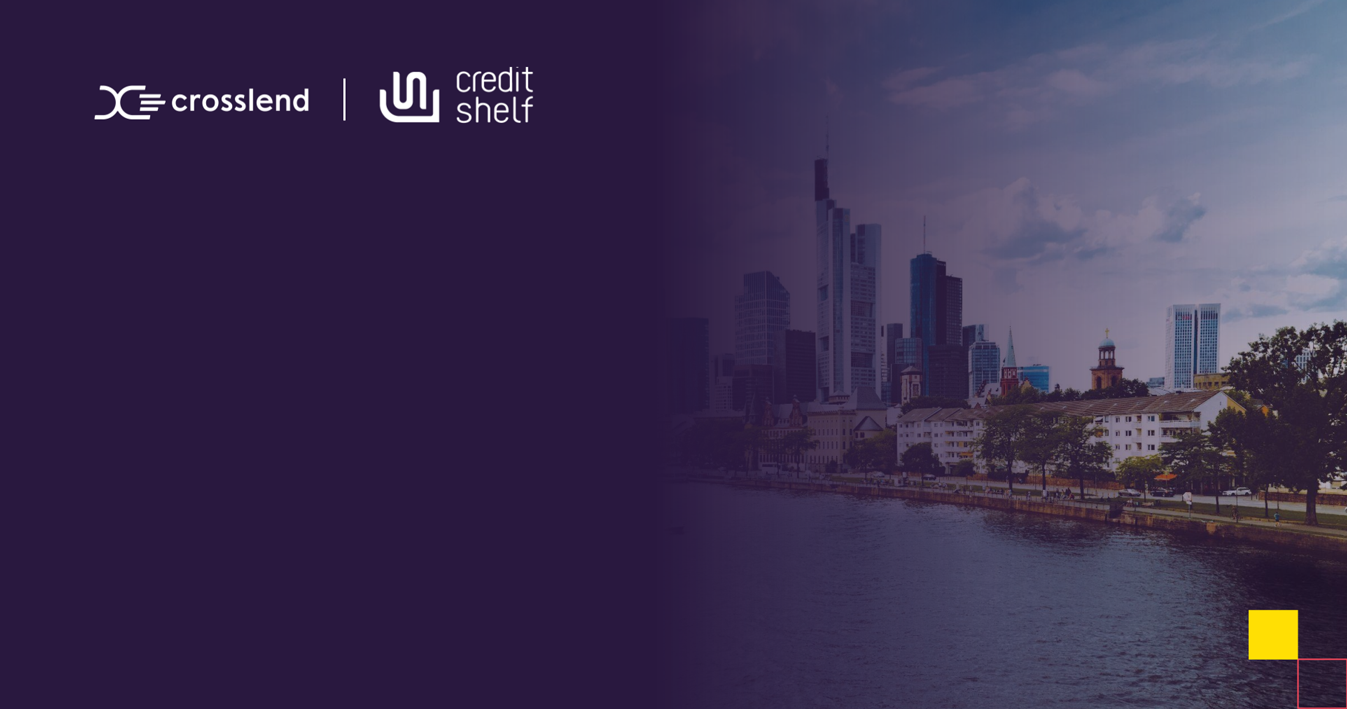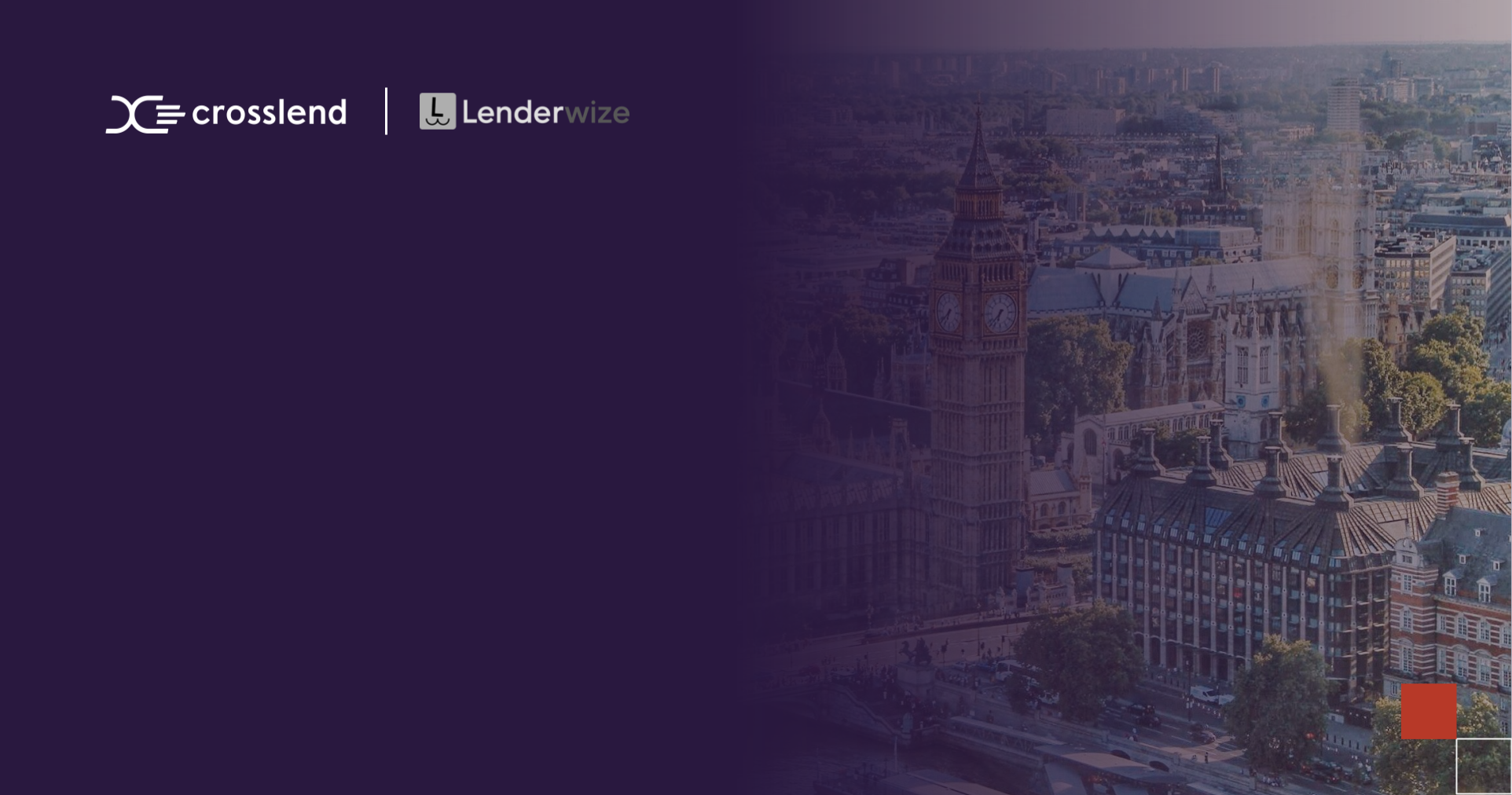Originator Spotlight/ creditshelf
Founded in 2014, creditshelf is a lending platform focused on the German Mittelstand, supporting the capital needs of businesses while allowing institutional investors to gain exposure to this segment. With many German banks becoming increasingly risk averse, demand for financing among SMEs, including working capital, is set for steady growth, believes Dr Daniel Bartsch, co-founder and CFO at creditshelf.

Marco Hinz: Hi Daniel, please could you give us an introduction to creditshelf and your role within the organisation?
My name is Daniel Bartsch, and I’m a co-founder and CFO of creditshelf. As a member of the executive board, I am responsible for the finance side of the business. I also play a client-facing and business development role. creditshelf was founded in 2014 with a vision to support SMEs in Germany against the backdrop of banks retrenching from certain segments in the market. This retrenching came as a result of regulatory changes as well as other factors, such as process inefficiencies. At that time, we were able to see a clear window of opportunity to step into the market, ultimately to provide services that would allow SMEs to tap credit more efficiently, and thereby get support for their businesses. This of course has the benefit of helping to grow the real economy. While we lend to German SMEs, we are not a bank ourselves. We are a digital lending platform. On the other side of our business, we have institutional investors who are funding these loans. That includes the European Investment Fund, for example, as well as other institutional investors.
Marco Hinz: What do you see as the main impact that creditshelf is making?
Mr Bartsch: Over the years, we’ve lent just shy of half a billion euros to German SMEs. And of course, this has a direct impact on what these companies are doing. A lot of the time, we finance working capital, but we also finance growth and initiatives that fast growing businesses want to pursue. It’s often difficult for these companies to get funding from banks for the aforementioned purposes and we often see banks relying heavily on traditional lending models and processes. Generally, banks feel most comfortable when lending with physical assets as collateral. However, what we’re seeing as part of the transformation of the German economy is that many new businesses actually tend to be asset light – they tend to have digital business models, for example. So a lot of the value is actually held in intellectual property (IP), it’s not held in tangibles, and therefore, traditional credit models quickly reach their limits.
We are more flexible. Within our team of roughly 70 people, we’ve built processes which are customer friendly, easy to use, and very efficient all the way up the credit value chain, including risk analysis and underwriting. All of this benefits the customer so they can focus on their business rather than having to spend hours, days, weeks – even months – in conversation with banks. With creditshelf, they get swift turnaround times and funds which they can use to grow their businesses.
Marco Hinz: For German banks, there are additional capital requirements ahead. Do you think banks will continue to pull back from SME lending?
Mr Bartsch: I think it’s an interesting question. At face value, when you look at the numbers over the past 12 to 15 years, back to the last financial crisis, what you see is that banks’ nominal lending amounts in the German SME sector have stayed flat.
So the total amount of lending to these SMEs in absolute terms is more or less the same as it used to be in 2009, while during that time, the economy has cumulatively grown by 40%.
Essentially, this tells you that businesses have actually funded this growth outside of traditional bank debt. There are a number of instruments that come into play here, including equity, but also non-bank financing alternatives.
What we’ve particularly seen over the past two years is that banks have actually become more and more reluctant to provide their own balance sheets for SME lending. During the Corona crisis, there were lots of government support programmes, which were facilitated by the commercial banks, but the ultimate risk didn’t sit on their balance sheets. Instead, it was passed through to government entities, including the KfW [a state-owned investment and development bank]. It was effectively a pass-through business. At some point, this government market will come to an end. Banks will ultimately need to get back into a normal, commercial market regime, and it will be very interesting to see how they will meet these upcoming challenges. We cannot envisage that they will go from more or less zero [risk] back up to full power. So, there will be additional opportunities; non-bank finance will become ever more important. We see this as an inflection point for the market.
Marco Hinz: What does that mean for creditshelf and the demand for loans? I’ve read you have a relatively low acceptance rate, around 10%, so obviously it can’t fall to you to support the entire German SME segment?
Mr Bartsch: We’ve always taken a conservative stance on underwriting, with a very strict approach and credit philosophy at our core. When looking at these conversion rates, in the first few years of our existence we stood around the 5% level. In the meantime, we’ve managed to achieve 10%, which was our interim goal. We think that conversion will gravitate towards a higher number, simply because we are seeing higher quality [businesses] applying and better matchmaking. Therefore we believe that our acceptance rates have the potential to increase in the future.
So, that means that the business is set for further growth, firstly thanks to natural factors, and in addition, we think there will be extra waves of demand coming in. This is simply because of what has been pumped through the KfW government loan schemes over the past two years; businesses will no longer be able to access finance that way. So on the one hand, there will be a number of refinance opportunities, and on the other hand, we believe there will be demand for additional credit as companies grow. Corona is hopefully coming to an end. We of course also hope for the war in Ukraine and the related turbulence in Eastern Europe to come to a peaceful end as soon as possible. Moreover, supply chain issues will eventually be sorted out. Then, we would expect to see a lot of potential for the economy to experience a more normal rebound, which will be accompanied by demand for additional finance.
So, if there is increased demand for capital from businesses, both in working capital and for investment purposes, we believe banks will not be in a position to be very aggressive in their lending for a number of reasons. One of these clearly being that the past two years have shown that banks are not the most efficient risk takers themselves.. More and more, they tend to really look for ‘risk free assets’, and it’s valid to question whether these assets are really that interesting when considered on a yield basis.
Marco Hinz: Are you saying that many German banks have focused on business areas which are super low risk, but also quite low return, and that’s where they’re comfortable at the moment?
Mr Bartsch: Exactly. That’s where they’re comfortable. They have traditional models which come with traditional ways of thinking: they prefer physical assets as collateral – mortgages and so on. If they lend to SMEs, they need physical assets which they can evaluate, which will give them relief on their capital treatment as per the models. In the end, what it means is that they’re trying to lend to the lowest perceived risk buckets, but also at very low rates. Whenever actual capital is required for the benefit of growth projects, initiatives that really have a strong impact on the economy and society, then banks will shy away and say, ‘look, this is not bank business, it doesn’t display the usual characteristics of the loan business that we do. You need to fund it differently.’ And here’s the gap.
Often, what we see is that a business’ collateral has already been pledged to banks, and they lend very conservatively against it. But when it comes to additional funding, banks will often be unwilling to lend beyond those loans which are collateralised with business assets. I think this is where the opportunity lies, and why we at creditshelf will see more demand for unsecured debt.
Marco Hinz: What is the split on your platform between secured and unsecured lending?
Mr Bartsch: We predominantly do unsecured lending. We rarely ever lend against physical assets. The main and core part of our business is to lend unsecured. In some cases, we might take personal guarantees. But our main focus is really to lend against cash flows. We look at the business holistically, their ability to succeed in the marketplace, and obviously, having a good historical financial performance is also a precondition.
Marco Hinz: When you say SME, what size business is this?
Mr Bartsch: We are typically talking about classic German Mittelstand companies that, in our case, average around 20 million euros in annual revenue. One million euroa is typically the minimum revenue for a company before they come on our horizon. We need a historical track record – the minimum is three years, though on average they are much older – for us to be able to support a business.
There are so many of these mid-sized companies in Germany, and so many of them have had their existing relationships with banks for many years. That’s why a lot of them are frustrated with the way they are being treated by the banks, namely the turnaround times, the lack of process efficiency and transparency, and the amount of capital banks will readily lend, particularly because in some segments, banks just don’t like to lend on an unsecured basis.
Marco Hinz: Do you exclude any sectors?
Mr Bartsch: In general, we are industry agnostic and build our portfolio using a case-by-case approach. Nonetheless, there are some sectors we exclude outright – weapons, gambling, tobacco. Additionally, there are certain sectors where we are more careful; we run sector ratings and adjust these from time to time against the backdrop of what’s going on in the economy. For example, sectors that have structural issues like stationary retail and fashion, which currently are subject to large disruption due to online businesses taking over more and more market share. This is something we factor into our models and therefore we tend to be underweight in certain sectors.
Marco Hinz: You have cooperation agreements with Commerzbank and a few other banks. What’s the advantage of this for you? What are the advantages of this type of cooperation for banks?
Mr Bartsch: We have cooperation agreements with banks on both sides of our business. On the origination side, banks can refer clients to us in situations where they cannot help the customer themselves. For example, if they can’t provide credit, but want to keep them as a client from a share of wallet perspective across other products, they need the credit to be provided by someone else, who should ideally not be a competitor. As a monoline lender, we only offer credit, and we don’t touch the rest of the relationship and the share of wallet, so that’s a good solution for the bank.
Another case is where they already have a lending or credit relationship, but they have reached a point where the bank will not extend further, such as when the assets are fully used as collateral: then the unsecured piece in the capital structure may be provided by us. We are not a competitor with banks simply because we just offer one type of product that they mainly don’t want to offer themselves.
On the other side, parts of our funding also come from banks. Some banks are interested in the return profile of our asset class, and see an interesting risk/reward in the funding of these loans. For example, banks with very low originations, or a foreign bank that doesn’t have access to the German market but likes the Mittelstand asset class and would like to gain exposure.
We can offer a number of different formats and products – a bank as an investor could invest outright, funding 100% of the loan and investing directly into the flow. In a structured format, a bank could take a secured position, which is protected by an equity cushion, and therefore, take a different risk profile, which can also protect their risk weighted asset (RWA) treatment. So there are a number of options.
Marco Hinz: Talking more broadly about your investor base, who are they? What is the attraction of the asset class, and what are some of the strategies and formats?
Mr Bartsch: From day one, we have held the view that we would not want to distribute these assets to retail investors. Therefore, our funding base is 100% institutional. Investors have a lot of options – when they first look at the asset class and have a dialogue with us, investors can get a lot of data and information about historic performance, vintages, defaults, and the overall performance. The larger share of the loans are monthly amortising, so the repayment profile is set out such that the loans amortise over their lifetime. This means that the effective duration is relatively short.
A potential investor can examine the data, get comfortable with creditshelf’s underwriting approach, and depending on the preferred investment size, there are different investment formats we can offer. We have the creditshelf loan fund where an investor can participate in the return, even in the back book. Investors can carve out particular segments of our origination and therefore limit investment criteria to certain segments, by sector, risk category, size of exposure, and so on. Investors can also choose between whole loan or partial loan exposures, meaning that when we write larger loans, the entirety of the exposure doesn’t have to sit with one investor – we can slice the loan exposure among different investors who are eligible funders.
Marco Hinz: Do you have resale or rebuy options?
Mr Bartsch: We don’t run an active secondary market. However, what we’ve seen in the past is that when it comes to certain opportunities, we can check with existing investors and warehouses whether they would be willing to sell off parts of their exposure horizontally. For example, for new investors who have done their full due diligence with creditshelf on the back book and who want to set up a fresh funding vehicle and start a seed portfolio to allow them to deploy capital from day one, this horizontal sale of parts of exposure can work well. Typically, once investors have finished their due diligence, they want to see deployment as quickly as possible so they can see a return.
Marco Hinz: What is your view on the overall visibility that institutions have on this sector, and its overall attractiveness?
Mr Bartsch: When you take a step back and look at the market and the asset class over the past 10 years, it’s clear that the growth seen has been substantial. This has been driven by a general environment of very low yields in the public markets. It will be interesting to see, now with the recent spikes in US credit and also in Europe, how the private markets deal with this, because it seems that rates [in public fixed income] are gravitating a little higher.
But from our perspective, we still think that the private market will remain a very attractive space to be in, simply because of the restrictions associated with traditional bank debt. We see that public markets are still being relatively highly valued, while on the flip side, they offer relatively low returns.
Therefore, I think the secular trend of more money flowing into the private markets will continue.
For investors, when they look into different strategies, they have to familiarise themselves with the landscape and the sets of opportunities existing in the market. And for a company like ours, offering a relatively innovative, and new product, that means there is still a certain education requirement for the market in general.
Marco Hinz: How do you communicate to investors about the opportunities on your platform?
Mr Bartsch: Our portfolio offers a very nice alpha against rated credit in the same credit quality space. In essence, we are talking about the BB to B space. We currently generate a net return of up to 6% – even higher over the past one or two years. This is quite an attractive pick up. Other important details include that these are highly diversified portfolios, while the loans have amortising repayment structures. That makes them very different from traditional private debt portfolios. In traditional debt portfolios, there are typically fewer borrowers in one portfolio, with more concentration and bullet repayment profiles, meaning there is a reliance on refinancing from banks [at maturity]. Overall we’re looking at a different profile, and I think the segment we’re in is super attractive. Our approach requires a bit of a deeper understanding of credit compared to the traditional approach. But our methods have proved themselves to be a very resilient way of investing through the cycle.
Marco Hinz: There are some economists with a negative outlook for economic conditions. How do you think the loans on your platform would perform in a more adverse credit environment?
Mr Bartsch: When we started this business seven years ago, everyone was saying, ‘Were in a very benign credit environment, you almost cannot make mistakes. The yield you’re offering is a very nice yield, but have you seen the loan book tested in a more adverse market environment?’ What we have seen over the past two years is a scenario where the economy has contracted quite substantially. German GDP declined by 5% in 2020, one of the most severe contractions in the past 75 years.
During this time our portfolio has behaved more robustly than your typical traditional bank portfolio. There are a number of reasons for this – as I mentioned earlier, a very cautious underwriting philosophy, but also a focus on trying to identify which sectors will profit from the current market environment. For example, in the midst of Corona when people were very cautious about going out, we lent a lot of money to online businesses such as online pharmacies which were clear winners from the crisis. These businesses saw the opportunities and needed funding quickly to take advantage of this. And we were able to support them quickly and efficiently.
What you see in our track record is that the portfolio performs quite nicely because we don’t have the typical losers – we didn’t have any hotels or restaurants in the portfolio whatsoever. Our performance has been stellar. Further down the road, what does it look like? It’s never easy to anticipate the future. But I think from our perspective, we are very happy with what we’ve built so far, and the portfolio continues to behave very resiliently, this is despite recent shocks, for example in the supply chains, as well as the inflationary environment which has picked up. It’s not going to always be sunny weather, but we are very comfortable with our positioning. This is against the backdrop of gross yields in the range of 8-9% – that gives investors a significant cushion before any losses eat into capital, and these are the factors we take comfort in.
Marco Hinz: One topic for the industry at large is the European Crowdfunding Service Providers (ECSP) regulation covering peer-to-peer lenders in the EU. Do you have a view on this regulation? Will it have benefits (such as standardisation) or will it improve outcomes for investors?
Mr Bartsch: First of all, I think it’s positive that the regulators are looking at this space and providing certain guidelines to assist the market and its participants. From a creditshelf perspective, since our business model works only with institutional investors, we are probably not affected by it. It’s still something we will look at and take seriously, but generally speaking, for platforms that distribute to retail, it’s important to have professional guidelines that will also tick all the necessary boxes for institutional investors. Of course, we already have such standards in place, since institutions often take a lot more convincing before they invest, compared to retail investors.
Marco Hinz: You have cooperated with CrossLend in the past, particularly when it comes to using our securitisation service. Can you say anything about the benefits of the partnership?
Mr Bartsch: CrossLend has been a partner of ours for a number of years. They can be a very effective partner because they have built specialist infrastructure around the capital markets and investment world. In the past, we have used this infrastructure to securitise parts of our origination and make such assets available to investors with a suitable appetite thanks to the CrossLend platform.
Marco Hinz: Thank you for your time, Daniel.
Follow CrossLend on LinkedIn for more Originator Spotlights, and our latest insights on private debt, finance and innovation.
Any views expressed in this interview are the personal views of the interviewee, and do not necessarily reflect the position of CrossLend or its employees. This article should not be construed as investment advice, or relied upon by anyone as legal, accounting, compliance or tax advice, or for any other purposes. This article is not to be construed, under any circumstances, by implication or otherwise, as an offer to sell, or a solicitation to buy securities.
Related articles
Securitisation: active management option to boost Luxembourg hub
The overhaul of Luxembourg’s securitisation laws introduced a number of changes, notably allowing for active management and a broader [...]
Originator Spotlight/Lenderwize
A fast-growing trade finance platform, Lenderwize specialises in invoice financing in the digital economy. Currently its platform provides its [...]
Digital lending emerges as an important sub-segment of private debt
Amid increasing breadth within the private debt asset class, specialised investors can allocate capital to sub segments in a bid [...]








